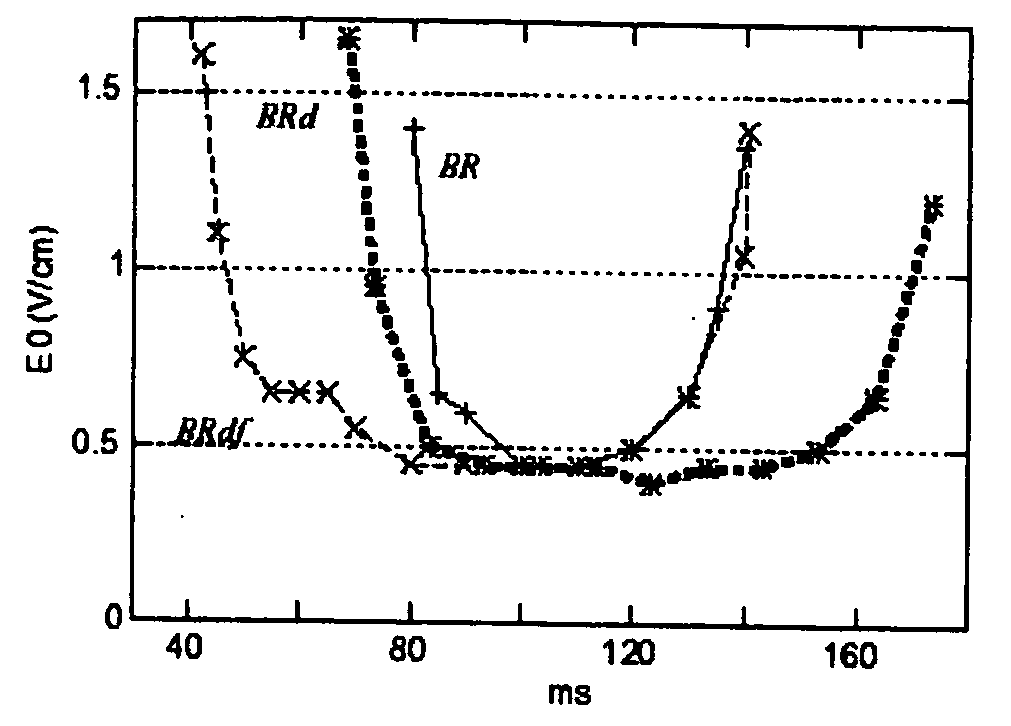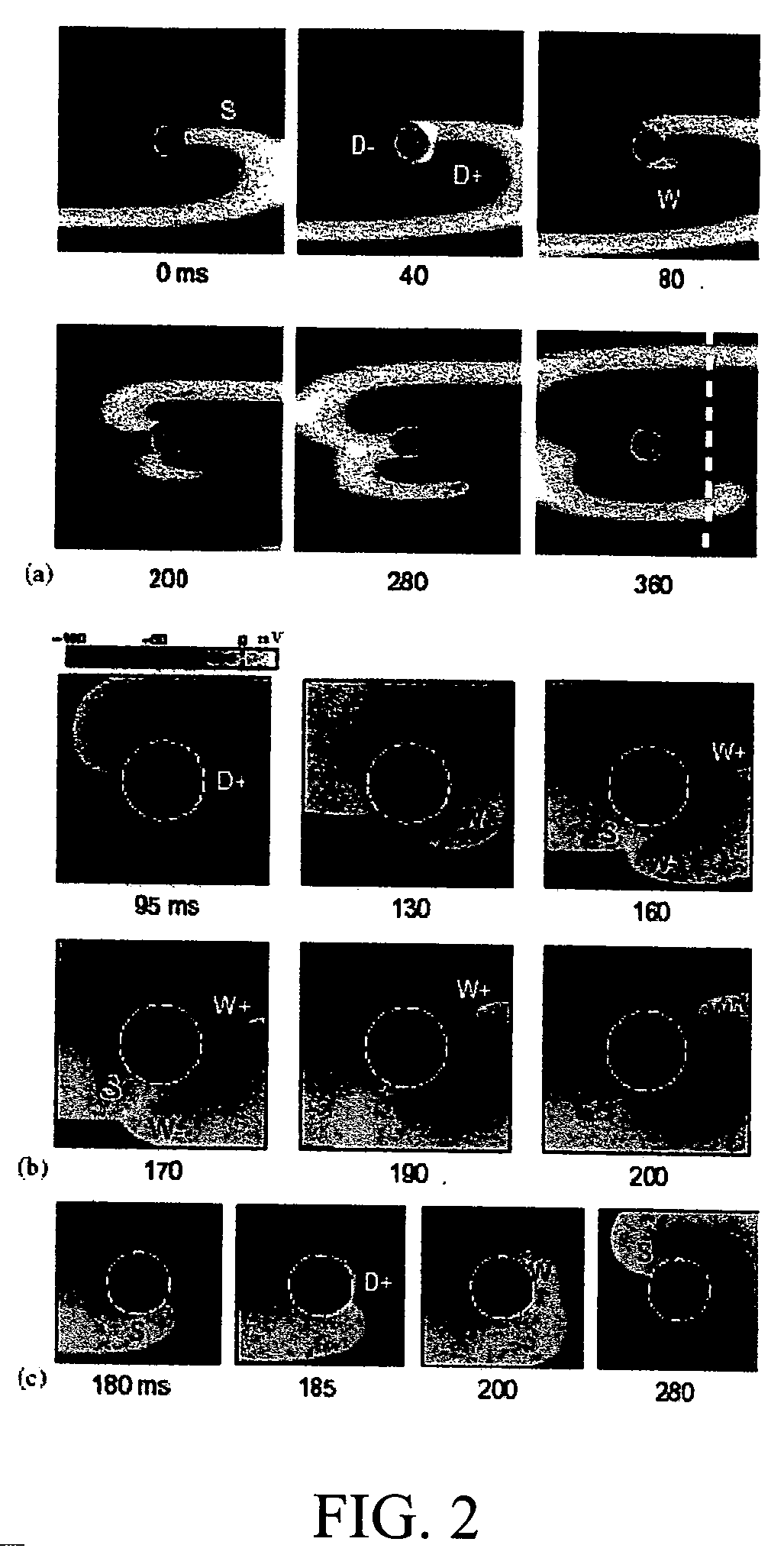Method for low-voltage termination of cardiac arrhythmias by effectively unpinning anatomical reentries
a low-voltage, cardiac arrhythmia technology, applied in the field of cardiac arrhythmias termination, can solve the problems that conventional atp pulses have difficulty terminating anatomical reentry, and achieve the effect of increasing the likelihood of destructive interference with the wave tip
- Summary
- Abstract
- Description
- Claims
- Application Information
AI Technical Summary
Benefits of technology
Problems solved by technology
Method used
Image
Examples
Embodiment Construction
[0069] The present invention provides a method of unpinning and terminating an anatomical reentry, whether the precise or estimated location of the reentry is known or unknown. A background discussion of the mathematical and scientific basis underlying the monodomain and bidomain cell models which the present invention builds upon is presented, followed by a discussion of the present invention and some of the experimental data and results supporting the present invention.
[0070] Intracellular clefts in cardiac tissue are small areas—smaller than the cardiac cells themselves—resulting in complex electrical patterns. For a point injection of current, these clefts create a quadrupole distribution of membrane potential near an electrode. Near an obstacle, an electrical field creates a hexapole distribution superimposed over a dipole. This is valid also for an obstacle around which an anatomical reentry rotates.
[0071] Dipole, quadrupole, and hexapole patterns induced by an electric fiel...
PUM
 Login to View More
Login to View More Abstract
Description
Claims
Application Information
 Login to View More
Login to View More - R&D
- Intellectual Property
- Life Sciences
- Materials
- Tech Scout
- Unparalleled Data Quality
- Higher Quality Content
- 60% Fewer Hallucinations
Browse by: Latest US Patents, China's latest patents, Technical Efficacy Thesaurus, Application Domain, Technology Topic, Popular Technical Reports.
© 2025 PatSnap. All rights reserved.Legal|Privacy policy|Modern Slavery Act Transparency Statement|Sitemap|About US| Contact US: help@patsnap.com



